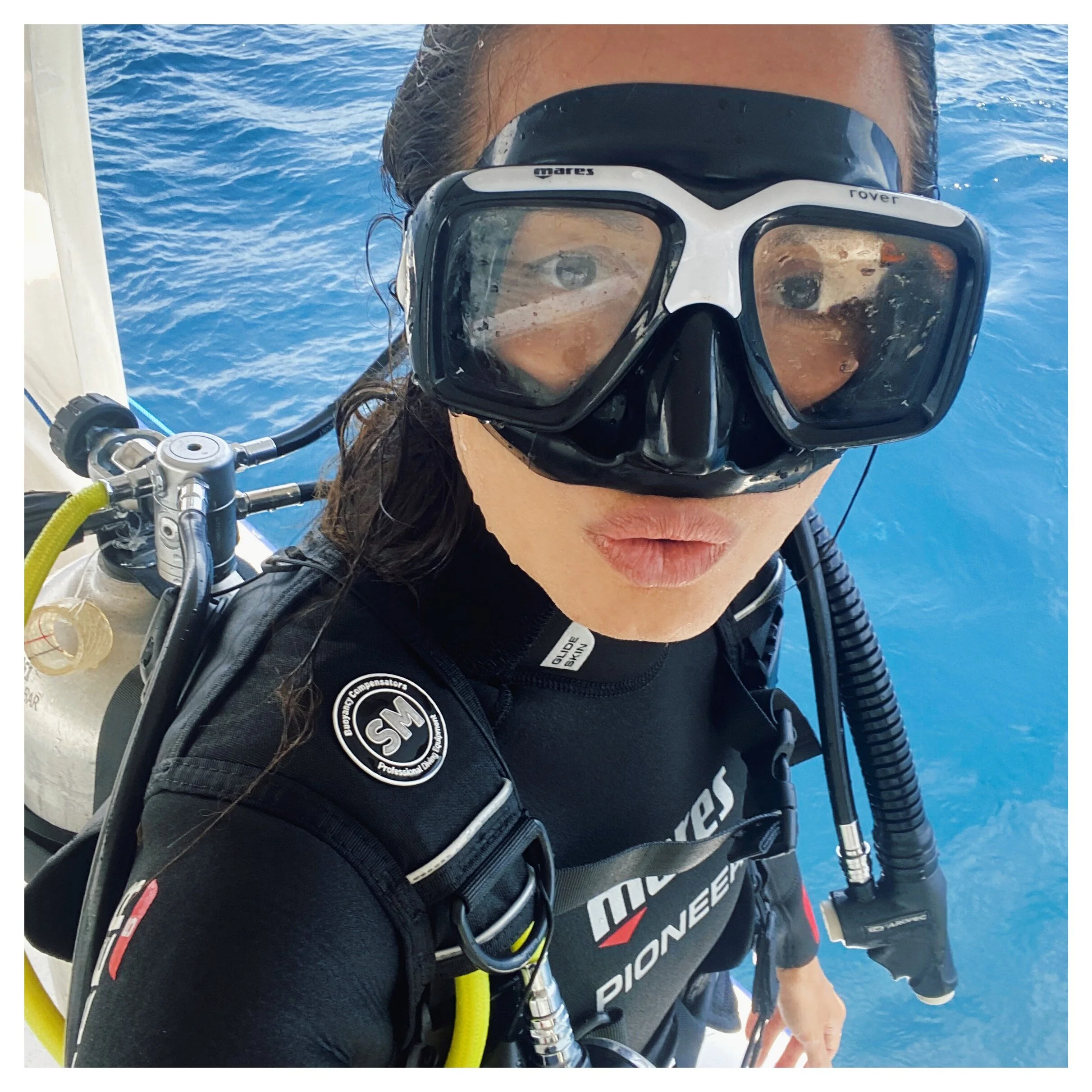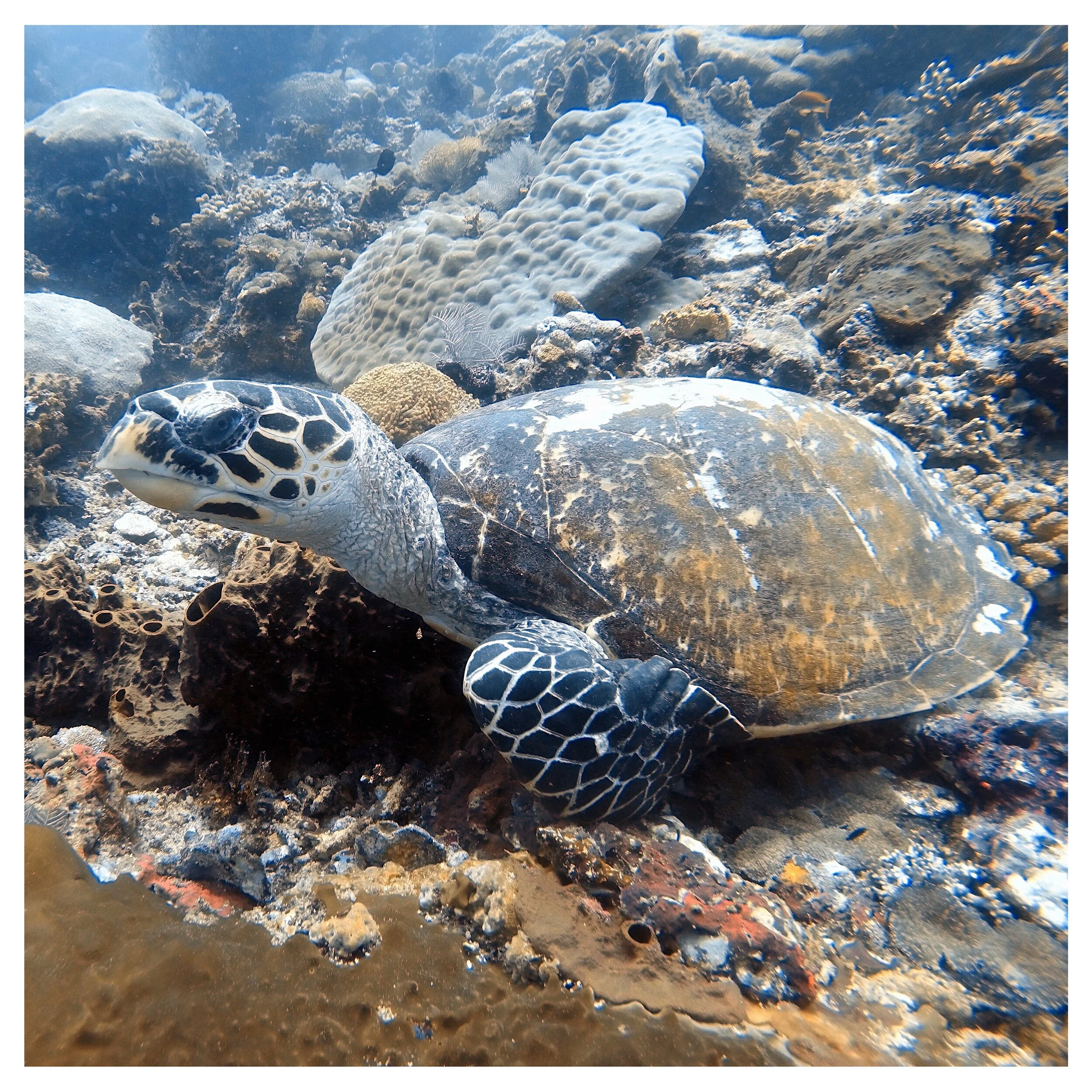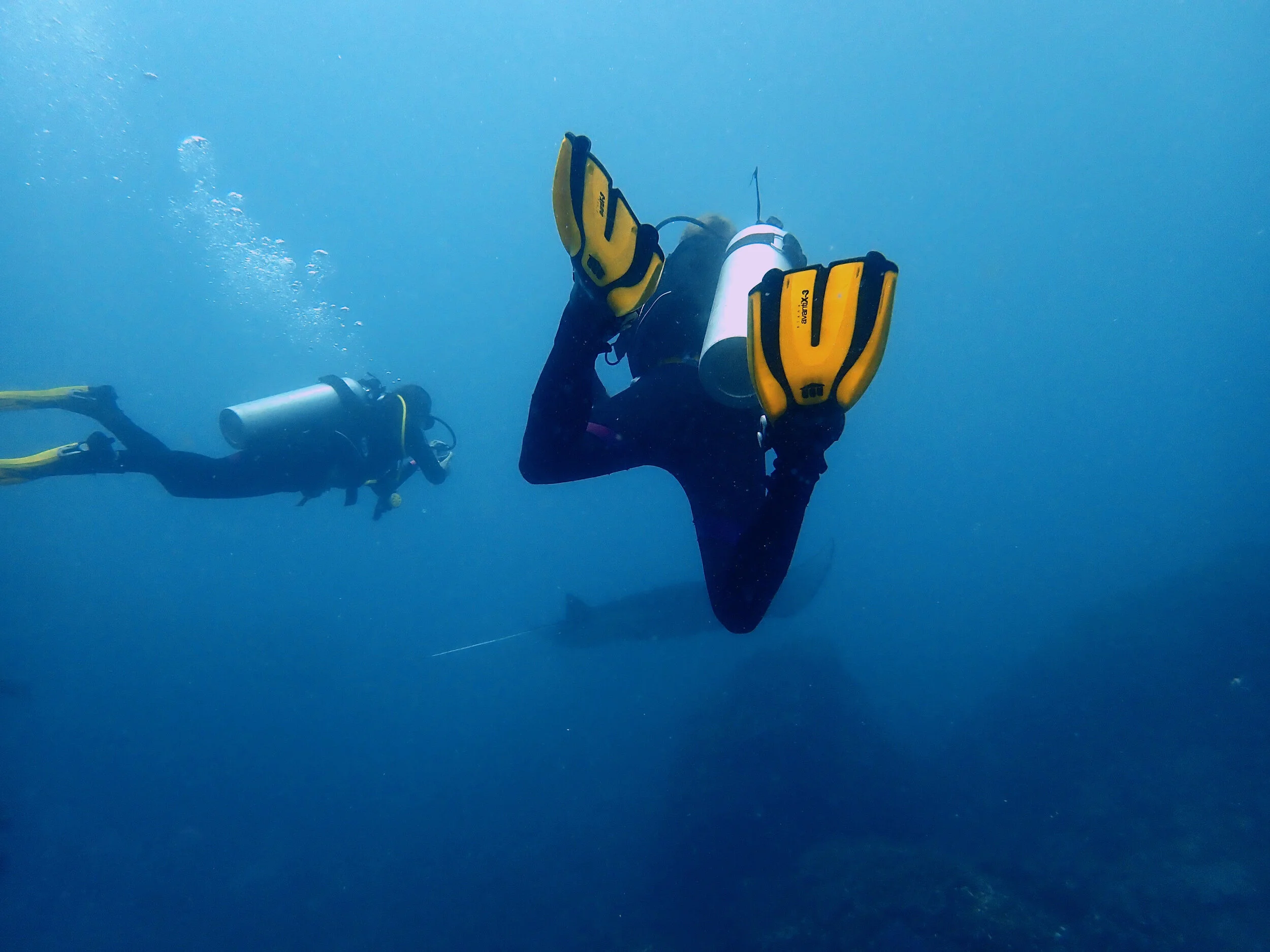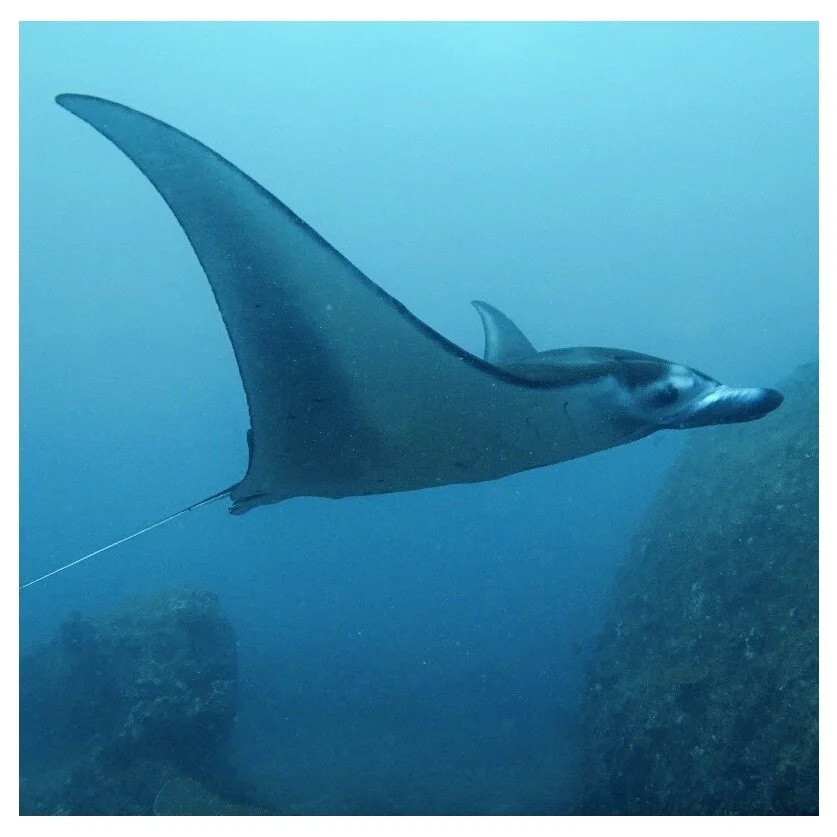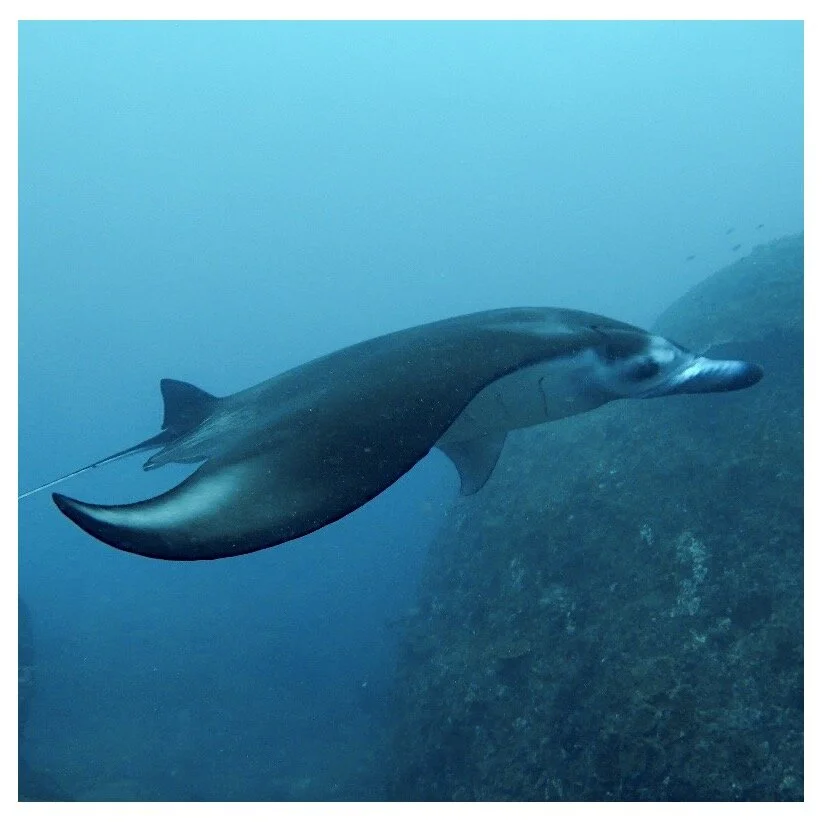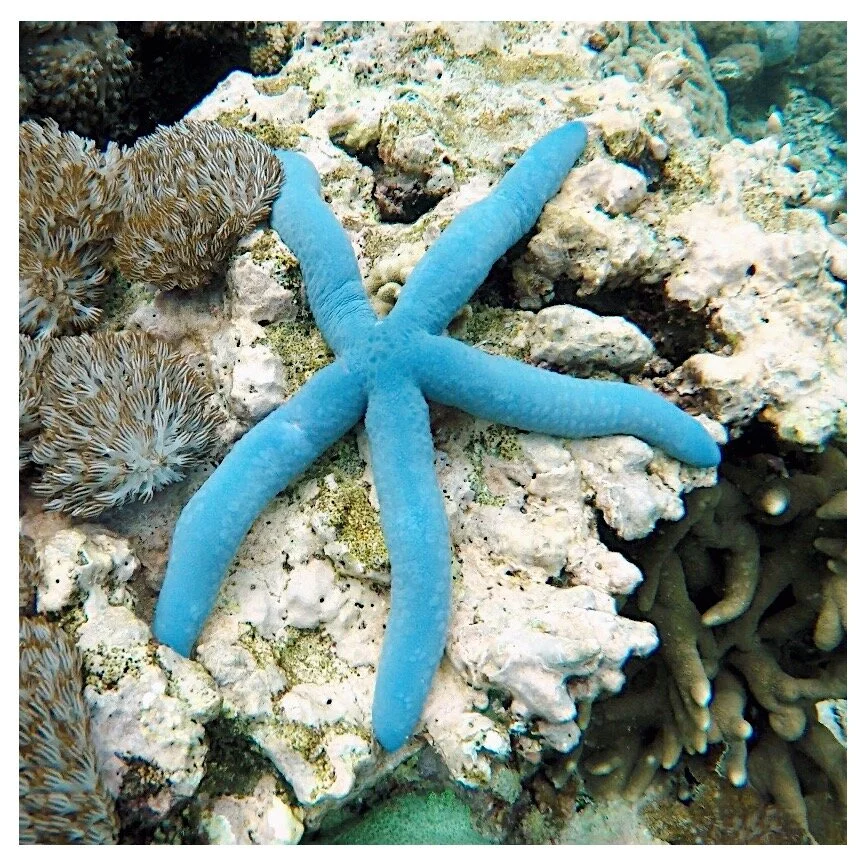The Wonderful World of Scuba - Nusa Penida Edition
As a toddler, I was absolutely terrified of two things: heights and swimming in large bodies of water. My fear of water was a mystery to almost everyone around me. My name ‘Deniz’ which translates to ‘sea’ is quite ironic, given the fact that whenever my parents tried to put me into a large body of water, be it a lake or the sea, I would frantically scramble up their bodies and koala-wrap myself around their necks in a panic. I may have feared drowning, but I loved the sea. I would spend days glued to the television screen watching the adventures of French explorer and legendary ocean scientist Jaques Cousteau. Two decades later when his granddaughter Alexandra accidentally stumbled upon my instagram account and liked a bunch of my photos I promptly sent her a DM detailing what an immense positive influence her grandfather’s work had been on me as a child.
When I was 6, I finally learned how to swim from an ex Olympic swimming champion, taking weekly lessons in the pool of Ankara hotel in Almaty. I didn’t become an Olympic swimmer, I was too boisterous, had trouble concentrating and my coach was way too nice to discipline me. I frequently preferred trading swimming laps in the ‘adult’ pool for splashing around in the kiddie whirlpool. But she did manage to curb my fear of water. Now that I knew how to stay afloat, I no longer feared drowning. In my teens I took a number of recreational swim programs like Bronze Cross - a certification in water rescue which requires you to swim 600 meters in under 18 minutes using any combination of strokes. There I became a strong and confident swimmer, able to tread water for long stretches of time, along with the best in the class. I had forgotten that I was once deathly afraid of the deep.
It was in 2015 on the island of Koh Phi Phi in Thailand that I had first attempted to do my PADI Open Water Certification to become a recreational scuba diver. I finished the first day of training but quit the next day. To pass the PADI course you are required to remove your mask and regulator (the mouthpiece through which you take in air underwater) and reinstall them underwater. In Thailand we had no pool, so I was required to do this at a depth of 6 meters in the open water and my old fear of drowning choked me up on the spot. I had also recently gone through a bad breakup and my nervous system couldn’t handle the stress. I just couldn’t bring myself to remove the lifesaving equipment, if only for a few moments.
After my first dive in over a year and a half
My first time seeing and filming a Hawksbeak Turtle / Depth 18.5m
It would be 4 years before I would sign up for another PADI course, in Bali. This time, I had spent an entire week studying theory and diving equipment forward and back during my visa run to Singapore. By the end of the week I could assemble all my gear wearing a blindfold, passed my tests with top grades and successfully mastered the art of underwater mask removal, water purging and regulator replacement. This time my desire to get my certificate was stronger than my fear. Failure was not an option, I had something to prove. My first two open water dives were incredible, I got to dive one of the top 10 dive sites in the world, the USS Liberty Shipwreck. My next two dives were absolutely brutal. The water at Manta Point in June was ice cold causing me to almost go into hypothermic shock after my third dive and on my fourth dive paddling against the current made me run out of breath and caused me to have a panic attack underwater. In fact I had panic attacks twice in a row on two separate dives at the time mark of exactly 7 minutes and 12 meters. It was terrifying, and one day I’ll go more in depth with what happened, but luckily my brilliant instructor Helen was able to navigate me through both and I aced my open water course. It did peak my curiosity though, why I got anxiety attacks at around the same time and depth. My curiosity would be answered in quite an unusual way a few weeks after my course during a hypnotherapy session, during which instead of regressing back to my early childhood, I regressed back into the 17th century England where I woke up as a sailor and revealed to my hypnotherapist that I had spent my entire life sailing the high seas, eventually drowning in a storm shipwreck. I came out of my session so anxious and physically shook I wondered if indeed I had either drowned in a past life at the depth of 12 meters after 7 minutes of being in the water, or if I had inherited some genetic memory trauma of a family member suffering a similar fate. In the book ‘It didn’t Start With You’, Mark Wolynn, a world leader in the field of inherited family trauma says that we can inherit unresolved trauma from ancestors without being consciously aware of its true source. Whatever it was, I felt like I had gotten to some sort of a revelation when it came to the paralyzing fear of drowning that had plagued me for most of my early life. But enough of that … a year, a pandemic and few dives later I made a return to scuba off the coast of Nusa Penida with Julia of Purple Dive Penida, who got me back in the water and held my hand (literally) through my first couple of dives back, until I was able to reintegrate into the marine environment and regain my confidence.
Last weekend I went diving with Purple Dive Penida and a couple of French travel bloggers Franck and Richard. During this time of year the water temperatures at Manta Point are much higher than those I experienced during my previous dives here in the summer. Nevertheless, traumatised by my last dive in the bay a year earlier, I donned a MARES Pioneer 5mm wetsuit with a rashguard underneath. I practically had seal skin. The dive would’ve been absolutely mint had I not had to purge water leaking into my mask every five minutes. This was a good reminder to break in my new TUSA mask, which I hadn’t used yet. In general, if you’re not going to invest into your own equipment, it’s a good idea to at least invest into a good mask that fits your face. The mask I had borrowed was good, but it didn’t vacuum onto my skin properly, hence the leakage. I still needed to scrub the chemical protection off the glass of my new mask to keep it from fogging up, so I borrowed a different one. Looking on the bright side, I got to practice my mask purging skills.
We made our descent and cruised along the cleaning stations and managed to get a glimpse of two giant mantas flying by. A cleaning station is an underwater location where large marine life comes to be cleaned off by smaller aquatic creatures. The small fish remove external and internal parasites from the animals ‘docking’ at a cleaning station. The larger animals swim up to the cleaning stations and position themselves in a way which signals that they need a cleaning, often opening their mouths wide for smaller fish to be able to get inside. Witnessing this ingenious system at play is truly remarkable.
The first time I saw mantas at Manta Point, the water was ice cold and the visibility was higher. There were about 7 of them circling a group of 9 divers. The sight of these magnificent ‘underwater spaceships’ with a wingspan of up to 29 ft. (8.8 meters) just left me completely in awe .. and even a bit teary eyed. They are playful, curious and gentle giants. Unlike much of the other marine life, mantas are interested in you and will once in a while swim up and engage in an underwater dance of sorts, hovering above you and ever so gently, voluntarily brushing up against your body.
At Manta Point we spotted our first giant Manta Ray
These majestic creatures leave you speechless
We were lucky to see the mantas that day and after cruising along the reef for just over half an hour we began our ascent. Finally popping out of the water, we were picked up by the boat. It was surreal to think that the last time I was here, there were over 15 boats in the bay, one of which ran over our SMB - Surface Market Buoy - a bright orange flag you inflate with your BCD (Buoyancy Control Device) that floats up to the surface and lets others know you’re about to come up. This time we were the only boat there, a rare - most likely never again to be repeated opportunity to have the entire dive site to ourselves. Also, less chances of a speedboat propeller running over your head. What a gift it was.
Giant Manta Ray
The grace with which these creatures swim through the abyss is breathtaking.
The waters were rough though. The boat was rocking side to side and after getting my rig off I began to feel increasingly nauseous. We were still waiting for two more divers to surface. I couldn’t take the rocking any longer and flung myself over the side of the boat spitting foam into the water. When we were taking the boat to manta point I proudly exclaimed about how I had never gotten seasick in my life. An hour and a half later I was spewing water and bile into the ocean. I didn’t know whether to laugh or cry, I felt so ill. The one thing I was grateful for is that I hadn’t eaten breakfast that morning, so while I was gagging there was nothing to throw up. Victoria and Dennis finally surfaced and we went on our way. As our boat was leaving Manta Point I hung over the side of the speedboat half pale half green occasionally spitting into the water. When we hit glassy waters my stomach settled and exhausted I passed out sitting on the floor of the boat. A half hour later we stopped at our second location, SD Point. The water was very glassy, as Julia pointed out to me earlier it meant that there were strong currents underneath. As mentioned previously strong currents are not my friend (even thought I’ve been working on mending that relationship), but I was so stoked about not being seasick anymore I crunched down on some cookies and sugary tea and got back into my tank rig, backflipping off the side of the boat with my two companions. We made our descent and settled into the pull of the current, riding along. It was faster than we expected and a few minutes in I found myself having to paddle to keep from flipping over into Julia. Already exhausted from the morning’s events the paddling quickly got me out of breath and I got an anxiety attack, reminiscent of the very first one I ever got a year ago. I started hyperventilating and signaled that I needed to go up. It’s hard to explain what having a panic attack feels like underwater. Your body goes into panic mode and from there on it’s a fight between your mind (which understands that everything is fine) and your body (which is about to freak out and spit the regulator out). The former HAS to win, otherwise you’re in trouble. But it’s hard to control your natural reflexes. Our bodies aren’t meant to be underwater strapped to air tanks feeding air into our lungs through a thin little tube. Just like your body doesn’t want to throw itself out of an airplane (even with a rig on), it doesn’t want to dive either, but you teach it to. You convince yourself you’re safe and then you can actually enjoy the dive and all the magic that becomes accessible through putting your body into an unnatural environment.
When I’m relaxed underwater and there are no currents I melt into my environment. I become one with the marine life and dread having to go back to “my world”, alas you can only dive as long as you have air available and my tank usually hits 40 bar after about 40 minutes. As I like to joke “ I love breathing”. We surfaced, quite far from the boat. The current had carried us well away in a few minutes. We got picked up to go back for a second attempt at our original descent point but I was exhausted. My two buddies went down again while I put on a mask and jumped in the water with a snorkel to do some ‘lazy diving’ aka snorkeling. Two minutes into my leisurely float I spotted a Hawksbeak turtle a few meters below on the coral. I maneuvered my body for a dive but something was off. I couldn’t penetrate the surface of the water. I felt like a big beachball floundering up top. What the? …. and then it dawned on me. I was still wearing the 5mm wetsuit, which rendered me super buoyant. I may as well have been a big beachball. There was no way I could dive in that thing without some serious weights. I was too far from the boat, so I swam up to the buoy and proceeded to take off my fins and entire wetsuit off. The whole procedure lasted a few minutes. Trying to peel off a wetsuit while treading cold water (the water at SD point was 5 degrees lower than Manta Point) , is quite the mission. Whooping and hollering I managed to remove my suit. Zipping it inside the buoy, I put my fins back on and dove in to try and find the turtle. A few minutes later I spotted her again. While trying to maneuver myself to get footage of the turtle I heard squeaking sounds coming from my left. Turning, I saw shadows playing in the abyss. Dolphins!!! I heard dolphins! They never came close, but I was elated nevertheless. I spent about 15 more minutes in the water swimming between cold and warm currents and photographing the sea stars below. Freediving into the reef I thought to myself about how I much I love this deep and mysterious place, with all its strange and gloriously beautiful creatures, temperature changes and sounds. A few minutes later the boat was returning to pick me up. I climbed back on with a giant smile on my face. The morning felt like an imperfectly perfect adventure. Feeling much better, I couldn’t wait to go for my next dive.
Linckia Laevigata (Blue Sea Star)
Credits:
Photos of me diving: Julia from Purple Dive Penida
Marine life photography: The Fearless Nomad
In Partnership with Tropical Nomad Coworking Space

